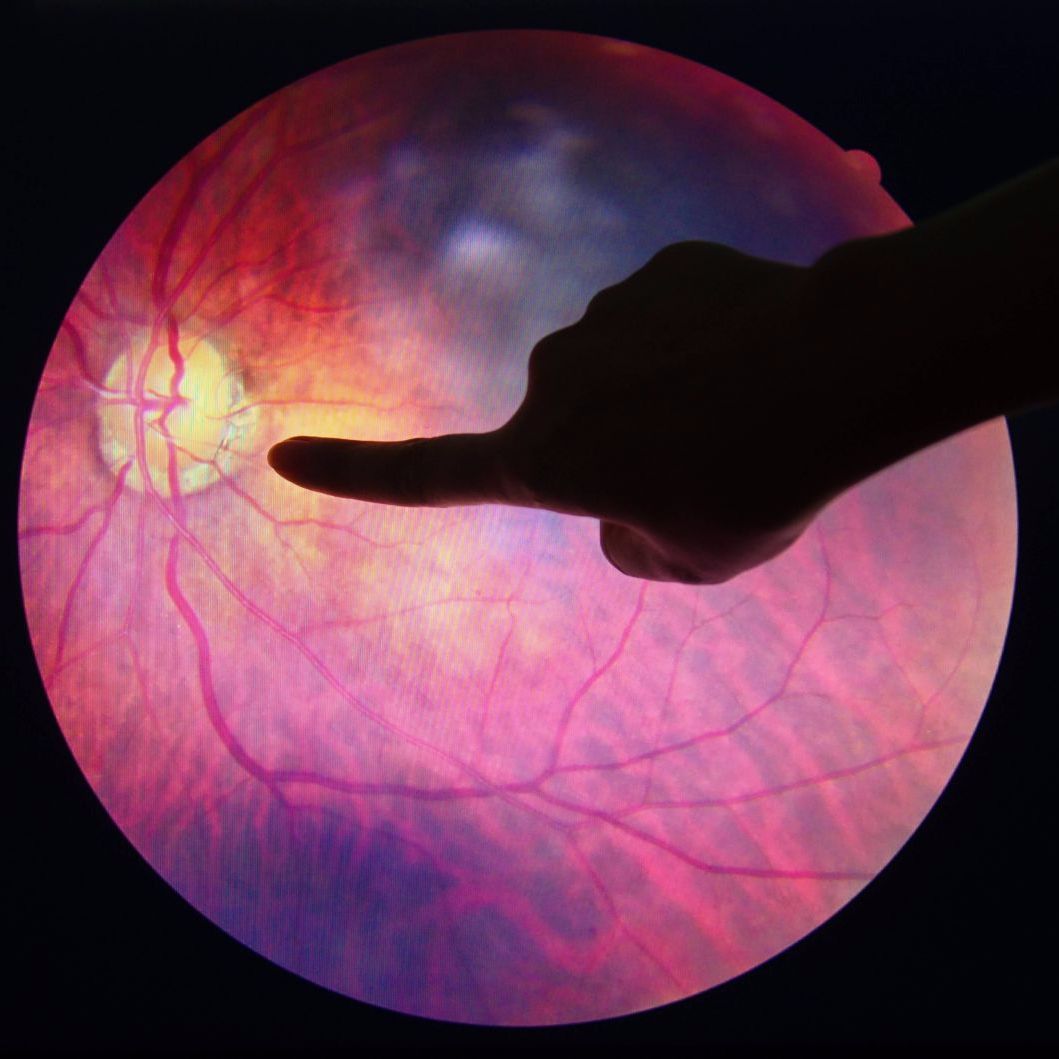Article
Anti-VEGF Treatment for nAMD May Influence Glaucoma Progression
Author(s):
A faster rate of visual field progression was observed among 37 glaucomatous eyes treated with anti-VEGF for nAMD compared with a control group of 4304 eyes without anti-VEGF.

Intravitreal anti-vascular endothelial growth factor (anti-VEGF) treatment for neovascular age-related macular degeneration (nAMD) may lead to the acceleration of glaucoma progression, according to new findings.
The analysis of real-world data from Finland indicate that nAMD requiring anti-VEGF treatment occurred in combination with glaucoma at a similar rate as might be expected in the general population.
However, the data show a statistically significant faster rate of visual field progression among 37 glaucomatous eyes receiving anti-VEGF treatment compared with a control group of 4304 eyes with glaucoma and without anti-VEGF for nAMD.
“Considering that both glaucoma and nAMD requiring anti-VEGF treatment affect elderly patients who are under continuous surveillance, a larger overlap of these two diseases could be anticipated,” wrote study author Hannele Uusitalo-Järvinen, Tays Eye Centre, Tampere University Hospital. “To our knowledge, this is the first real-world data set with 10 years follow-up to report such occurrences.”
Research on glaucoma progression during anti-VEGF treatment for nAMD remains mixed, but repeated anti-VEGF injections have been associated with an increased risk of glaucoma and ocular hypertension. Uusitalo-Järvinen and team sought to investigate the rate of glaucoma and nAMD occurrence in the same patient and further evaluated whether glaucoma progression is greater in eyes treated with intravitreal anti-VEGF injection for nAMD.
The single-center retrospective analysis collected real-world data from electronic medical records of patients with nAMD and/or glaucoma treated in the Tays Eye Centre in Finland between January 2008 and December 2017. Eyes with ≥1 year glaucoma follow-up were included in the analysis.
In order to evaluate glaucoma progression in eyes treated with anti-VEGF, the study evaluated changes in visual field (mean deviation [MD], dB/year) and intraocular pressure (IOP [mmHg/year]). Eyes with IOP and MD measurements ≤1 year before and at least once ≥1 year after the first anti-VEGF injections were included. Fundus photographs taken ≤1 year before and at least once ≥1 year after the first anti-VEGF injections were evaluated for patients with bilateral glaucoma and unilateral nAMD receiving anti-VEGF treatment.
Over the 10-year study period, 2750 eyes of 2156 patients (mean age, 78 years) with nAMD were treated with anti-VEGF therapy and 11581 eyes of 6314 patients were followed up for glaucoma, according to the analysis. Among this population, 185 eyes of 147 patients had glaucoma and concomitant nAMD treated with anti-VEGF injections, corresponding to 2% of glaucoma and 7% of nAMD patients.
The data on visual field progression show the mean rate was larger among the glaucomatous eyes receiving anti-VEGF treatment for nAMD treatment, compared to the non anti-VEGF injection group (-0.70 dB/year vs. -0.27 dB/year; P = .027).
Moreover, the injection subgroup included 20 eyes with anti-VEGF treatment for nAMD and 20 fellow eyes without anti-VEGF treatment for nAMD. The changes in visual field were -0.62 dB/year vs. -0.33 dB/year (P = .654), respectively. The investigators noted that this sample size was too small to detect differences in progression rates to reach statistical singificance.
Progression in fundus photographs was observed in 14 of 20 and 10 of 20 eyes (P = .219) eyes with and without anti-VEGF injections, respectively. They additionally saw a trend for less favorable long-term IOP level in eyes with anti-VEGF treatment (0.23 mmHg/year) than eyes without treatment (-0.35 mmHg/year).
Uusitalo-Järvinen highlighted the challenges in obtaining a large case-control study population, including the small overlap of patients with both nAMD and glaucoma and the advanced age of the population making it difficult to have a longer follow-up time.
The invstigators added that glaucoma and nAMD requiring intravitreal anti-VEGF injections does not commonly occur in the same patient.
“However, in spite of our small sample size of 37 patients, we found a statistically significant difference in visual field progression rates between nAMD treated glaucoma patients compared to their controls,” Uusitalo-Järvinen wrote. “Continuing accumulation of real-world data at additional clinical centers may shed further light on these questions.”
The study, “Glaucoma progression in patients receiving intravitreal anti-VEGF treatment for neovscular age-related macular degeneration,” was published in Acta Ophthalmologica.





